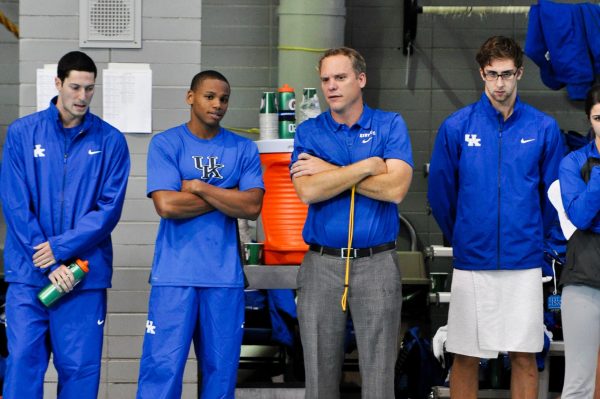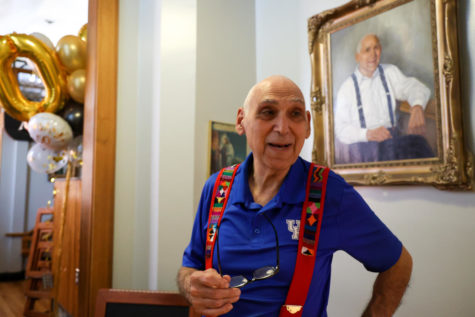UK testing new treatment for Parkinson’s
April 9, 2014
By Anne Halliwell
Dr. Craig van Horne is testing a unique treatment for Parkinson’s disease in UK’s College of Medicine.
He said that a new surgical procedure involves the insertion of peripheral nerve tissue from the body into areas of the brain that have been damaged by Parkinson’s while also implanting a neurostimulator.
If a piece of peripheral nerve tissue, from the ankle, in this instance, is put into the central nervous system, that tissue’s regenerative properties may allow the brain’s cells to heal themselves, van Horne said.
“This may lower medication usage and/or improve gait, balance and movement speed in these patients,” wrote Greg Gerhardt, director of the UK’s Center for Microelectrode Technology, in an email to the Kernel.
The disease manifests itself in tremors, rigidity, slowness and impaired balance and coordination in patients. It can be treated through drug therapy and deep brain stimulation, by inserting a neurostimulator used to target specific areas of the brain and encourage normal movement, according to the National Institute of Neurological Disorders and Stroke.
Parkinson’s is also chronic and progressive, meaning that it takes place over a relatively long period of time and gradually worsens, according to the institute’s website.
Van Horne and his team will evaluate several trial patients throughout one year in areas like mood and cognition, daily activities, motor function and response to medication using the Unified Parkinson’s Disease Rating Scale.
“We want to see if the patients are actually getting better over time or whether they are actually not getting worse,” van Horne said.
Although drug treatments and deep brain stimulation are FDA-approved, van Horne said that drugs tend to work for shorter periods of time per dose as the disease progresses.
Deep brain stimulation lengthens the drugs’ efficacy, but does little to help Parkinson’s patients directly, van Horne said.
The goal of the research initiative at UK is to find a treatment that slows or stops the disease process, Gerhardt said.
The peripheral nervous system consists of the nerve tissue branching out through the body from the brain and spine, which constitute the central nervous system, van Horne said.
The technique is being tested to determine whether the new tissues from the peripheral nervous system can lend regenerative properties to the brain.
If a person injures the brain and spinal cord, that tissue cannot be regrown, van Horne said. Not so for the peripheral nervous system, which produces some of the growth agents that have shown promise in his research.
Van Horne hopes that this new procedure could halt or reverse the onset of Parkinson’s, but added that only time will tell the scope and degree of the treatment’s effectiveness.
“That’s what we’re after,” van Horne said. “Anything we can do to help our patients.”






















































































































































